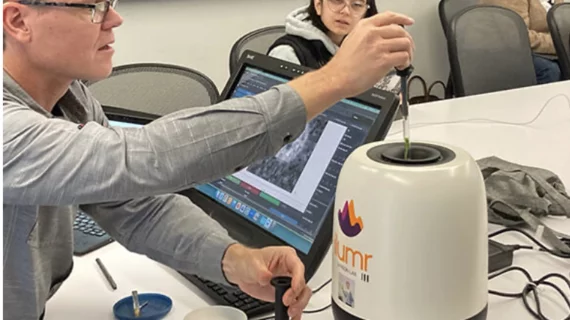'Desktop' MRI brings physics education to the classroom
A mini MRI scanner as small as a rice cooker is helping educate students at University of California, San Francisco.
Peder Larson, PhD, teaches a course on the principles of MRI at the university. In it, he uses a tabletop MRI scanner to provide students with more hands-on opportunities to learn about the physics that drive the modality’s imaging capabilities.
“This tabletop MRI provides hands-on experience in the classroom setting and fosters a deeper understanding of the technology and its underlying physics in our next generation of imaging specialists,” Larson says.
Unlike traditional MRI scanners that can weigh more than 30,000 pounds, the tabletop scanner—the Ilumr from Resonint—weighs around 20 pounds and is portable. It also does not require special infrastructure or cooling systems to conduct scans.
Although it cannot be used in any sort of medical capacity, it is an effective tool for teaching students how MRI equipment operates. It allows additional opportunities for students to experiment with how different imaging parameters and sequences affect image quality, the process of acquisition, contrast methods, and pulse sequence development. Students also can introduce artifacts to the scanner to see how different materials are visualized.
Resonint’s website says the desktop scanner is “engineered to remove the roadblock to learning by giving future practitioners and technologists a hands-on experience on a cost-effective and portable imaging system.”
“It gives us a mix of textbook-style learning, physics, engineering, the math behind MRI. And then we can go and take pictures of some sample and look at the principles that we’re learning in action,” Larson says. “We have a lot of MRIs at UCSF, but they’re set up for the clinical workflows and not for the kind of changing of parameters or exploring different options that you have in MRI. It’s been a great asset.”
Learn more about the desktop MRI here.

